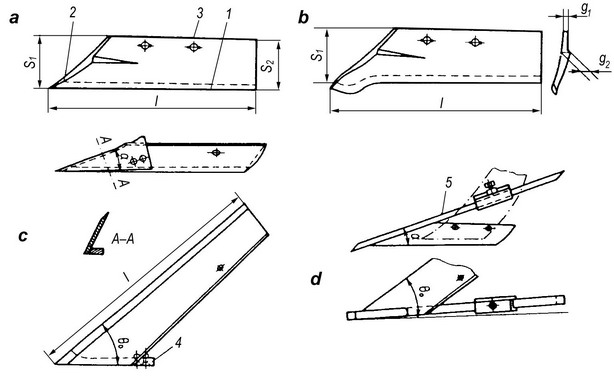 Setting the ploughshare in relation to the furrow wall and the bottom of the furrow.
Setting the ploughshare in relation to the furrow wall and the bottom of the furrow.
The position of the ploughshare in relation to the furrow wall and the bottom of the furrow is determined by the angles α and β .
The angle β - this is the so-called. cutting angle. It enables the cut-off furrow to be shifted up onto the mouldboard and influences the value of the resistance. The smaller the cutting angle is, the lower the cutting resistance of the furrow slice. However, at small cutting angles, crushing of the furrow slice is worse. The optimum value for the angle is 13-25 ° [0,23—0.44 rad] - for compact soils up to 40 ° [0,70 work] - for light soils.
Angle α - is the blade angle. It has no direct impact on the value of the resistance. However, the size of the cutting speed components depends on the blade setting angle. The component perpendicular to the share blade affects the degree of soil crushing, the size of the tangent component to the blade determines the ability of the ploughshare to undercut the furrow and plant roots.
The smaller the angle α is, the greater the undercutting capacity of the furrow.
However, reducing the angle α is limited due to the pressure of the plow on the vertical wall of the furrow. Excessive pressure of the plow would increase the friction force of the body against the furrow wall. The optimum value for the α angle is 40-50 ° [0,70—0.87 rad].